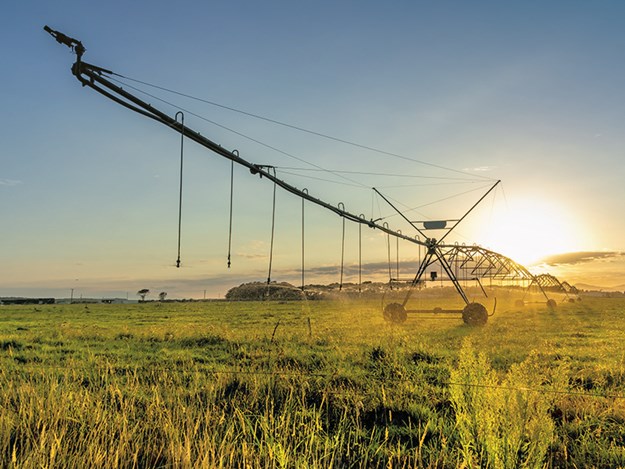Farm advice: Managing irrigation during dry conditions
IrrigatioNZ shares some considerations and recommendations to help navigate irrigation use during low rainfall, hot days, and wind creating dry conditions
 |
|
Stephen McNally
|
It’s hard to believe January has already been and gone and it’s looking like the rest of the summer and autumn month’s climate state may follow suit with low rainfall, hot days, and wind making for dry conditions. Although these conditions can cause issues for some, it’s great to have some long hot days and favourable conditions for many arable farmers looking to get their harvest underway.
With all this prevailing, it’s essential to be mindful of the potential challenges. Here are some considerations and recommendations to help you navigate your irrigation use during this time.
Performance evaluation of your irrigator
Knowing exactly how much water and how accurately your irrigator is applying water is essential for making good irrigation decisions. A simple bucket test can accurately assess your irrigator performance. Understanding your system capacity and return interval is also critical. While the Bucket Test app is a great way to get a rough indication of performance, we recommend getting a qualified performance assessor to conduct a full evaluation that includes observations and analysis of other critical performance measures in addition to a bucket test result.
Minimise off-target application
Look at where your irrigation is landing. Watering tracks, laneways, and other non-productive ground wastewater. Off-target irrigation, such as watering public roads, is prohibited in many districts. It’s also not a good look during summer.
Identify your soil types and know your water holding capacity, field capacity, and irrigation trigger points
Knowing how much water your soil can hold is essential to successful irrigation scheduling. Knowing the locations of your different soil types within your irrigation area is also a powerful management tool.
Schedule your irrigation
Using soil moisture sensors or soil water budgets to understand when plants need irrigation and how much to apply is essential. To make good use of soil moisture sensor data, you need to measure and record all irrigation and rainfall events. For water budgets, you also need to record daily plant water use (evapotranspiration). Make sure the equipment is operating correctly and any trace or trigger lines on your data report are correctly set up for your season.
Adopt deficit irrigation practices
Deficit irrigation is a scheduling practice that keeps the soil water above the irrigation trigger point but does not fully recharge the soil to field capacity. This allows any rainfall, particularly during the shoulders of the irrigation season, to be taken advantage of, minimising drainage, or surface flow losses from irrigation while maximising both your production and water allocations.
Re-nozzle your irrigator
Reducing the nozzle sizes on your irrigator is one way to reduce application depths and tailor applications to a restricted water supply. However, this method must be done with input from your irrigation service company to avoid damage or inefficiency within the irrigation system, especially putting pumps and control valves at risk of over-pressurisation.
Prioritise crops or paddocks to be irrigated
Targeting irrigation to areas of higher production or higher value crops maximises your water use efficiency during water restrictions. Lesser production areas or lower values crops will have yield losses as these areas will suffer moisture stress.
Reduce your irrigation area
Reducing your total irrigation area increases the amount of water available per hectare and may help to get the best from a restricted water supply. Targeting water to more efficient irrigation systems or soil types increases water use efficiency. This may not be easily achieved under some irrigation system types and may require some additional advice to avoid concentrating flows that exceed the infiltration and water-holding capacity of soils. More advanced irrigation system types, (e.g., VRI on pivots/linear), can target complex irrigation patterns within a single irrigation area.
Find new and used farm machinery for sale in NZ
Keep up to date in the industry by signing up to Farm Trader's free newsletter or liking us on Facebook







.jpg)
.jpeg)

.jpg)
.jpeg)
.jpg)
.jpeg)
.jpg)
.jpg)
.jpg)
.jpg)
.jpg)

